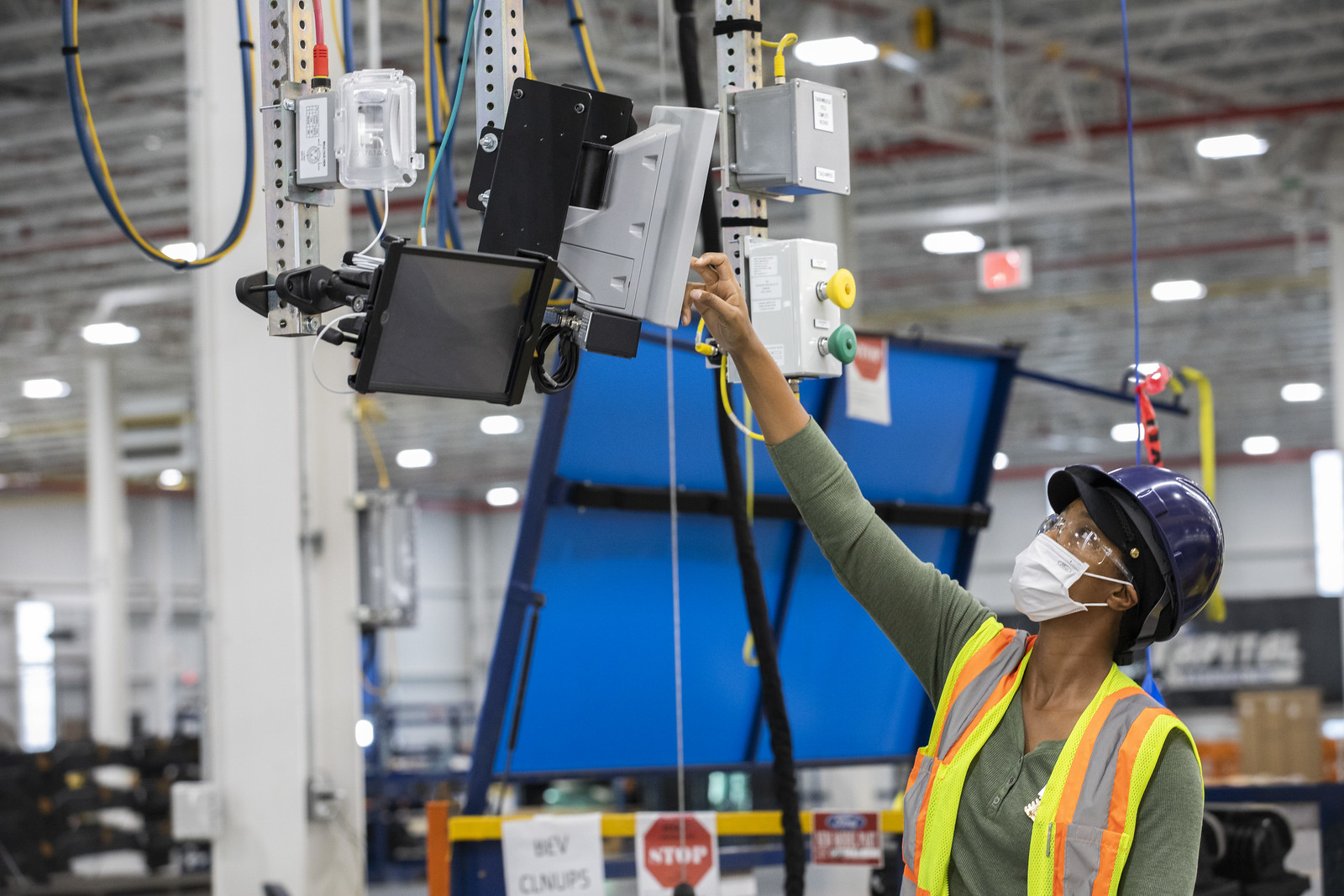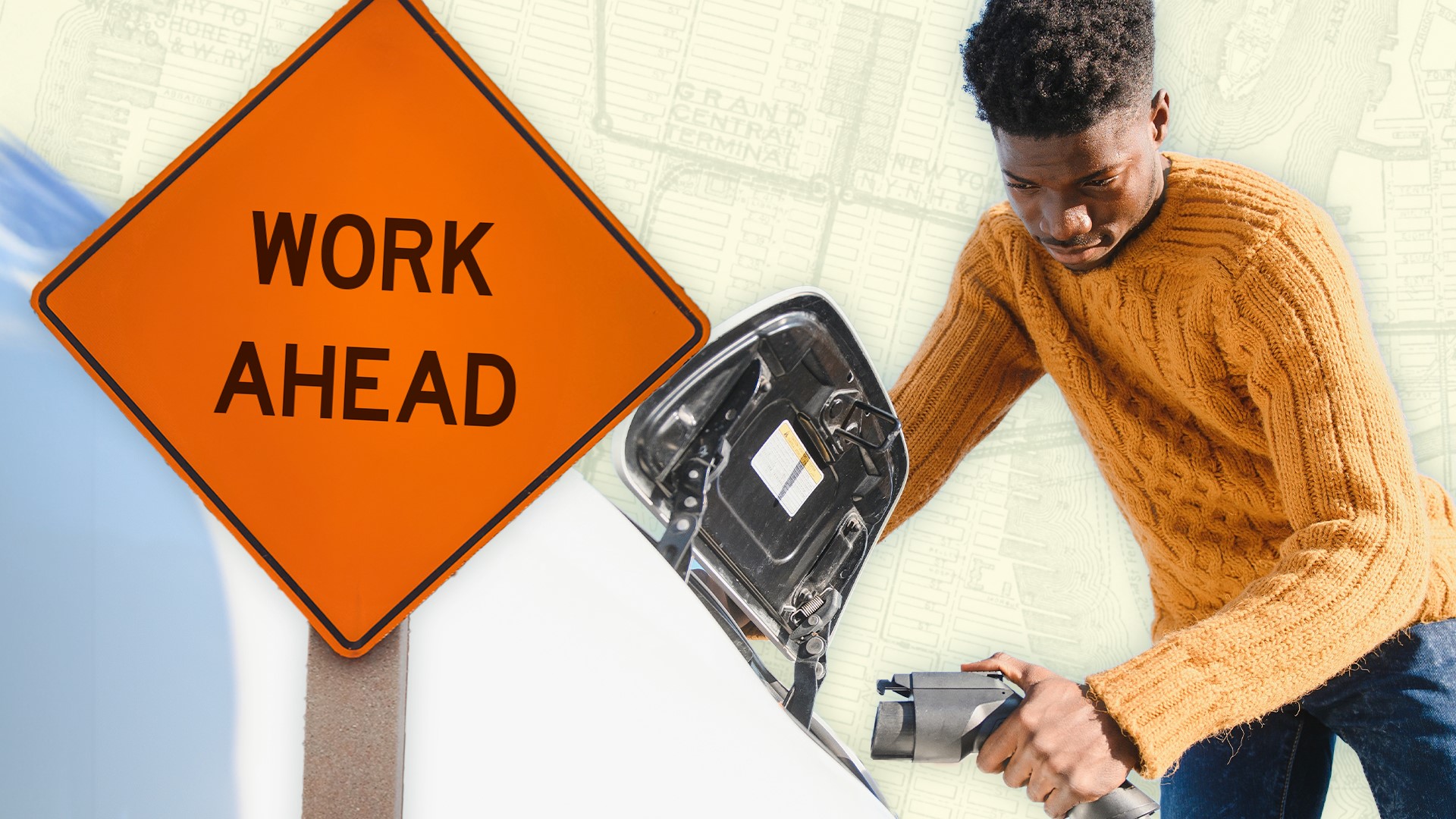Here’s the truth: Cars and trucks spew more greenhouse gasses than any other pollution source in this country—but we are on the path to solving this through electrifying transportation. If we move forward, American workers can build the clean cars of the future, and auto companies can help lead the way. Electric vehicles are the wave of the future, and that market is growing every day.
But if the MAGA Supreme Court justices or a new Trump administration—heaven forbid—have their way, they will try to tear up the investments and standards that are helping the industry move into this new market. If the big auto companies stay tied to fossil fuels, other competitors will eat their lunch. The question now is whether the industry will stand up for its own future and the workers and communities who depend upon it.
We’re calling the question. Evergreen just wrote a letter to the CEOs of America’s automakers, demanding that they commit to electrification—no matter who wins the election and no matter what new right-wing doctrine the Court makes up. We’re waiting for their answers, and so is the country.
Taking the Keys Away from Trump and Alito
Here’s the situation. Every day, the global market for zero-emission vehicles (ZEVs) is growing, and courtesy of the Inflation Reduction Act (IRA) and standards from California and the Environmental Protection Agency (EPA), companies doing business in the U.S. are trying to deliver for Americans who want cleaner vehicles and communities. But Trump and his Project 2025 cronies plan to attack the IRA and yank back funds.
Vice President Kamala Harris and Governor Tim Walz are ready to stop that direct assault, but the U.S. Supreme Court’s radical hostility to common sense environmental law has become clearer each term. That means there is real political and legal uncertainty in the way of the transition. In fact, it is totally plausible that the Supreme Court could decide the fate of key vehicle standards, including California’s nation-leading Advanced Clean Cars II (ACC2) program with its phase-out of internal combustion engines by 2035, along with EPA and NHTSA standards for the whole country, in the coming years.
The question is whether auto company boards and CEOs will meet the moment, or if they will let their fate be written for them by the likes of Justice Brett Kavanaugh and Donald Trump. That’s why our letter asks big auto companies building the American auto market to publicly commit to 100 percent zero-emission sales by the 2030s and make the investments to match. This would be consistent with the leading standards set by many U.S. states (including California), no matter what potentially changing federal laws and errant court decisions require.
We know that these companies can see their own best interest, and the public interest, in a stable electric vehicle future. Back when Donald Trump was president, he attempted to blow up the entire regulatory structure for vehicle electrification, causing chaos for company investments. The companies mostly refused to go along and kept investing in ZEVs despite the legal churn. Five of them—Honda, Ford, BMW, VW, and Volvo Cars—even struck contractual deals with California regulators to recommit to a clearly defined path forward to cut climate pollution (with Stellantis following suit some years later). Since then, the industry has increasingly stood up for itself—seven companies litigated on the environmental side in the face of recent challenges to Biden-Harris administration vehicle standards.
So, we know the industry can do better, but the path forward is not clear. At the same time as these positive steps were taken, we are seeing the same companies stop and start their specific electric vehicle plans, endangering certainty as they work to build up their market strategies for affordable ZEVs for all. Between this hedging and the anti-EV positions taken by some of these companies—like Toyota’s anti-EV lobbying or GM’s flirtation with the Trump administration—we know we can’t leave room for doubt. Moreover, most of these automakers’ contractual deals with California expire next year, so this question is a timely one. The companies need to present a clear plan if Trump or the Court starts tearing up the playbook again.
Here’s the bottom line: The companies cannot waver on the path forward, or allow Big Oil-backed rollbacks to disrupt the march to electrification. They cannot keep us guessing. If they do, they are risking billions of dollars in investments, thousands of jobs and livelihoods, and the future of the American auto market. As the clock ticks down to November, and then to critical court cases ahead, it is past time to re-commit to getting all the way to 100 percent ZEVs in the 2030s, as the leading standards and the science on climate and public health require. They must chart their stable, economically successful future, not leave it open to fossil fuel radicals.
Building Pressure for Good Decisions
Let’s be clear: We have the power to get the companies to the right answer. Most importantly, in the coming weeks, we can elect climate leaders Kamala Harris and Tim Walz, who can steer us toward a better future by supporting state and federal rules against rollback attempts and by appointing better Supreme Court justices. And we can keep up the drumbeat from investors, communities, customers, and workers to keep electrification on track.
The states have great leverage, too. Of course, states invest state and federal funds to make a better environment for electric vehicles—building out backbone charging networks that private investments can further grow and targeting incentives at lower-income folks who need better rides. But they also have real “sticks” to deploy via enacting focused policies to stabilize the market in advance of any disruption. For instance, states can explore “indirect source rules” that require big warehouses and other facilities that draw lots of vehicle traffic to focus on electric fleets and charging infrastructure.
Rules like this can rapidly clean up pollution sources that burden communities and make sure charger construction keeps pace with EV sales. States can explore newer policies, like feebates, automatic mechanisms that add a surcharge to big polluting fossil-fueled vehicles. They can then use that fee to subsidize electric vehicle purchases for people who need them. The list goes on. Well-designed clean fuel standards can also support electric vehicles and generate revenues for the transition, and they are being adopted by many states. Further, states can and should deploy pro-labor policies and community benefit agreements that can grow the new EV workforce and support unionization.
States can use sticks, not just carrots. States could abstain from purchasing vehicles for state fleets from automakers that are not committed to electrification—a tactic California deployed in the Trump years. Discretionary public money should not support companies attacking the public interest. Moreover, states will also have to re-secure lost pollution reductions from transportation if the key vehicle programs are disrupted, and automakers and oil companies could find themselves on the hook for big costs. Emission reductions can cost tens of thousands of dollars per ton, making electrification a more attractive option. Every company should prefer a future where they are moving forward on electrification to one in which policymakers who need to protect public health have to look for other solutions.
The bottom line? It is time for policymakers to get ready to lead and to make sure that automakers commit to leadership, too.





